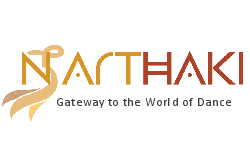 |
(In the Natya Sastra) The rhythmical aspects of music
have been dealt with at both an intellectual level and at the level of
execution. Ghana instruments (cymbals) were directly related to
maintaining of Tala. Talas had three basic time units Laghu, Guru and
Pluta. A notional time interval known as Matra is given and defined on
the basis of the time taken to utter five short syllables. Each part of
the Tala mentioned above was measured on this basis. Lagu was one Matra,
Guru was two Matras and Pluta was three Matras. Laya is defined as the
period of rest or the time duration between two actions. Talas were
divided by Kriyas that were the divisions of the Tala shown through hand
and finger movements of both the silent and non-silent types. The
length of the Tala was defined by Marga, which is the total duration
covered by the Tala, determined by the duration of each Kriya in the
Tala, This obviously would affect the speed of the Tala. Bharata
mentions three Margas. He also deals with extensions of Talas. This is a
process of increasing Kriyas (divisions) in the Tala from its basic
Kriya equals syllable form. This extension increases the total duration
of the Tala but does not create any change to the Laya of the Tala, as
the duration between every Kriya remains the same.
As we can see, the music of the Natya Sastra was highly evolved, defined
and sophisticated and definitely centred on theatrics being the heart
and soul of its presentation even though Gandharva as a form did exist.
There were few more texts post the Natya Shastra that enumerate this
same form of music
(TM Krishna in ‘December ragas’, The Hindu Magazine, Dec 12, 2010)
|

